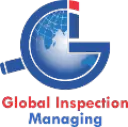In today’s global marketplace, exporters face the challenge of meeting various regulatory standards to ensure their products can be sold in different regions. One such essential standard is CE marking, which signifies conformity with health, safety, and environmental protection standards for products sold within the European Economic Area (EEA). This blog post aims to demystify CE marking, explore its significance, outline the certification process, and detail the inspection requirements for exporters.
What is CE Marking?
CE marking is a certification mark that indicates a product’s compliance with European Union (EU) safety, health, and environmental protection requirements. By affixing the CE mark, manufacturers declare that their products comply with all relevant EU legislation, thereby allowing them to be marketed freely within the EEA.
In essence, the CE mark is the manufacturer’s declaration that the product meets EU standards for safety, performance, and environmental protection. While it is a requirement for many products sold in the market, it is essential for enhancing consumer safety and building trust in products.
Why is CE Marking Important?
1. Market Access: CE marking is mandatory for a wide range of products before they can be sold in the EU. Without it, products may be denied entry into the market or subject to fines.
2. Consumer Safety: The mark enhances consumer protection by ensuring that products sold in the EEA meet strict health and safety regulations.
3. Legal Compliance: CE marking helps companies comply with EU directives and regulations, mitigating legal liabilities that may arise from non-compliance.
4. Quality Assurance: The process of obtaining CE marking involves rigorous testing and evaluation, ensuring that products maintain high quality standards.
5. Competitive Advantage: CE marking can enhance a manufacturer’s reputation and credibility in the marketplace, providing an edge over non-compliant competitors.
Products Requiring CE Marking
Not all products require CE marking. The following categories typically necessitate certification:
• Electrical equipment
• Machinery
• Medical devices
• Personal protective equipment (PPE)
• Construction products
• Toys
• Elevators
• Gas appliances
It is crucial for exporters to determine whether their specific products fall under these categories and require CE marking.
The CE Marking Certification Process
The certification process for obtaining CE marking can be complex and involves several critical steps:
1. Determine Applicable Directives
Identify the EU directives that apply to your product. Each directive outlines specific safety, health, and environmental requirements. Common directives include the Low Voltage Directive (LVD), Machinery Directive, and the General Product Safety Directive.
2. Conduct a Conformity Assessment
Based on the directives, conduct a conformity assessment to evaluate whether the product meets all essential requirements. This may involve:
• Risk assessment
• Testing for compliance with harmonized standards
• Evaluating product design and manufacturing processes
Certain products may require testing by a notified body—an independent organization designated by an EU country to assess conformity.
3. Compile Technical Documentation
Prepare the technical documentation that demonstrates compliance with the applicable directives. This should include:
• Product description
• Design and manufacturing details
• Test results
• User instructions
• A declaration of conformity outlining compliance with relevant directives
4. Affix the CE Mark
Once compliance is confirmed, manufacturers can affix the CE mark to their products, along with any necessary identification information. The CE mark should be visible, legible, and indelible, ensuring that consumers can easily identify the certification.
5. Maintain Compliance
CE marking is not a one-time event. Manufacturers must continually assess their products for compliance, especially when modifications are made or when new directives are introduced. Regular reviews and updates to the technical documentation are also essential.
Inspection Requirements for Exporters
To maintain compliance with CE marking and ensure product quality, exporters must adhere to specific inspection requirements:
1. Internal Inspections
Regular internal inspections are critical for monitoring production processes, ensuring that all products comply with CE marking requirements. Conducting systematic checks of manufacturing processes, materials, and finished products helps identify potential issues and areas for improvement.
2. Third-Party Testing
For certain products, third-party testing by an independent notified body is required. This establishes that the product meets EU standards and allows for unbiased verification. Testing may include:
• Safety evaluations
• Performance assessments
• Environmental impact analyses
3. Quality Management System (QMS)
Implementing a Quality Management System (QMS) compliant with ISO 9001 can be beneficial. A QMS helps streamline processes, improve product quality, and ensure that inspection requirements are met consistently.
4. Documentation and Record-Keeping
Maintain detailed and organized records of inspections, test results, and compliance assessments. Proper documentation is crucial for demonstrating compliance during audits and inspections and can safeguard against potential liabilities.
5. Training and Awareness
Educate employees on CE marking requirements and the importance of quality assurance. Regular training sessions can enhance employees’ understanding of compliance protocols and foster a culture of quality throughout the organization.
Challenges Faced by Exporters
Despite its benefits, obtaining CE marking can present challenges for exporters:
1. Complex Regulations: The myriad of directives and standards can be overwhelming. Exporters must stay current with regulations and ensure compliance.
2. Costs: The certification process can incur costs, including testing fees, notification fees, and additional documentation expenses.
3. Supply Chain Management: Ensuring that all components meet CE marking requirements can pose challenges, particularly when dealing with multiple suppliers.
4. Time-Consuming: The certification process can be lengthy, requiring comprehensive assessment and documentation that can delay product launches.
Conclusion
CE marking is a vital certification for exporters looking to access the European market and assure customers of their product quality and safety. The process may seem daunting, but understanding the certification steps and inspection requirements can demystify the procedure and help organizations achieve compliance successfully.
At Global Inspection Managing, we specialize in guiding exporters through the complexities of CE marking and ensuring that your products meet all necessary standards. Our expertise can save you time, reduce costs, and help you navigate the certification process efficiently.
If you are ready to take your export business to the next level and gain access to the European market, connect with us today!
